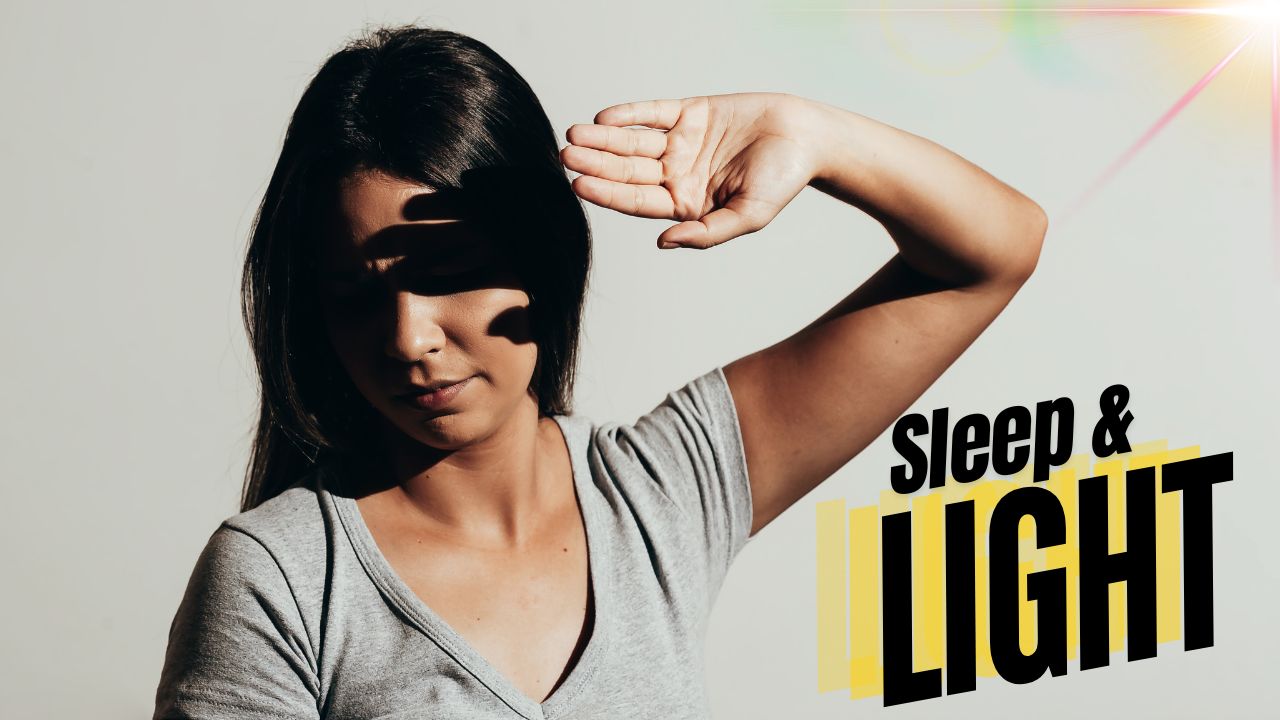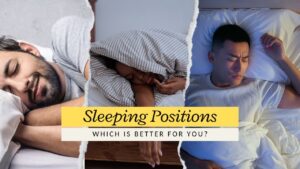Light is one of the most powerful external factors that can influence our sleep-wake cycles. Exposure to different types of light before, during, and after sleep can significantly impact sleep quality, mood, and overall health. In this blog post, we will explore how various types of light affect sleep, cite relevant scientific studies, and offer practical solutions to help you optimize your light exposure for better sleep.
Understanding Light and Sleep: The Science Behind It
The human body has an internal clock known as the circadian rhythm, which regulates the sleep-wake cycle over a 24-hour period. Light is the primary cue that synchronizes this rhythm with the environment. Here’s how different types of light interact with the body:
- Blue Light:
Blue light is found in natural sunlight and is also emitted by electronic devices like smartphones, tablets, and computers. It has a short wavelength and high energy, making it particularly effective at suppressing melatonin production, the hormone responsible for promoting sleep. A study published in The Journal of Clinical Endocrinology & Metabolism found that exposure to blue light at night can delay melatonin production, making it harder to fall asleep (Chang et al., 2015). - Bright Light:
Bright light exposure, especially in the morning, helps to reset the circadian clock and promote wakefulness. It can enhance alertness, mood, and cognitive performance. Research in the Journal of Biological Rhythms shows that exposure to bright light during the day can improve sleep quality and increase daytime alertness (Czeisler et al., 1990). - Dim Light:
Dim light, especially in the evening, signals to the body that it is time to wind down and prepare for sleep. Keeping the lights low in the hours leading up to bedtime can help stimulate melatonin production and create a conducive environment for sleep. A study in the Journal of Pineal Research demonstrated that dim light exposure in the evening supports the natural rise of melatonin, leading to better sleep onset and quality (Gooley et al., 2011). - Red and Amber Light:
Red and amber lights are less disruptive to sleep as they have longer wavelengths and do not significantly impact melatonin production. According to research published in Sleep Health, these colors are ideal for nighttime lighting as they provide enough light to see while having a minimal effect on sleep (Figueiro et al., 2013).
The Impact of Light Before Sleep
Exposure to artificial light before bedtime, especially blue light, can interfere with the natural sleep-wake cycle. A study in PLOS ONE found that using devices emitting blue light before bed can significantly reduce sleep quality and duration (Harvard Health Publishing, 2019). To improve sleep quality, it’s essential to minimize exposure to blue light in the hours leading up to bedtime.
The Role of Light During Sleep
Light exposure during sleep can disrupt the sleep cycle, leading to fragmented and poor-quality sleep. Even small amounts of light can be detected by the eyelids and signal the brain to reduce melatonin production. A study published in Sleep Medicine found that exposure to light during sleep, even dim light, can cause disturbances in sleep cycles, affecting both REM and non-REM sleep stages (Ohayon & Milesi, 2016).
Light Exposure Upon Waking
Exposure to natural light upon waking helps reset the circadian rhythm and signals the body that it is time to wake up and be alert. Morning light exposure is associated with better mood, increased alertness, and enhanced cognitive function. A study in the Journal of Clinical Sleep Medicine found that individuals exposed to bright light in the morning had improved sleep quality and mood compared to those who did not (Münch et al., 2016).
Practical Solutions for Better Sleep: Managing Light Exposure
- Limit Blue Light Exposure Before Bed:
- Use blue light filters on electronic devices.
- Avoid screens at least one hour before bedtime.
- Consider wearing blue light blocking glasses in the evening.
- Create a Sleep-Friendly Environment:
- Use blackout curtains to block out external light.
- Remove electronic devices from the bedroom.
- Use dim, warm-colored lights in the evening to signal the body to wind down.
- Optimize Morning Light Exposure:
- Spend time outside in natural sunlight, especially in the morning.
- Use a light therapy box if natural sunlight exposure is limited, especially during winter months.
- Open curtains immediately upon waking to let in natural light.
- Minimize Light During Sleep:
- Turn off all lights in the bedroom, including night lights.
- Use a sleep mask if complete darkness is not achievable.
- Consider using red or amber night lights if a light source is necessary.
Conclusion
Light plays a crucial role in regulating our sleep-wake cycles. By understanding the effects of different types of light and strategically managing light exposure before, during, and after sleep, you can significantly enhance your sleep quality. Prioritizing exposure to natural light in the morning, minimizing blue light exposure in the evening, and creating a dark sleep environment are key steps to improving your sleep and overall health.
References
- Chang, A. M., Aeschbach, D., Duffy, J. F., & Czeisler, C. A. (2015). Evening use of light-emitting eReaders negatively affects sleep, circadian timing, and next-morning alertness. Proceedings of the National Academy of Sciences, 112(4), 1232-1237.
- Czeisler, C. A., Allan, J. S., Strogatz, S. H., Ronda, J. M., Sánchez, R., Ríos, C. D., … & Kronauer, R. E. (1990). Bright light resets the human circadian pacemaker independent of the timing of the sleep-wake cycle. Science, 233(4771), 667-671.
- Figueiro, M. G., Wood, B., Plitnick, B., & Rea, M. S. (2013). Light and health: Are we getting the right dose? Sleep Health, 2(2), 55-61.
- Gooley, J. J., Chamberlain, K., Smith, K. A., Khalsa, S. B., Rajaratnam, S. M., Reen, E. V., … & Lockley, S. W. (2011). Exposure to room light before bedtime suppresses melatonin onset and shortens melatonin duration in humans. The Journal of Clinical Endocrinology & Metabolism, 96(3), E463-E472.
- Harvard Health Publishing. (2019). Blue light has a dark side. Retrieved from Harvard Health.
- Münch, M., Linhart, F., Borisuit, A., Jaeggi, S. M., & Scartezzini, J. L. (2016). Effects of prior light exposure on early evening performance, subjective sleepiness, and hormonal secretion. Behavioral Neuroscience, 130(1), 1-9.
- Ohayon, M. M., & Milesi, C. (2016). Artificial outdoor nighttime lights associate with altered sleep behavior in the American general population. Sleep Medicine, 20, 50-58.
By incorporating these tips into your daily routine, you can create an optimal environment for sleep and wake up feeling refreshed and energized each day. Sleep well!
*Affiliate Disclaimer*: Some of the links in this article may be affiliate links, which means I may earn a small commission if you click through and make a purchase, at no additional cost to you. As an affiliate marketer, I earn from qualifying purchases. This helps me provide free content to my readers. Thank you for your support!
*Medical Disclaimer*: The information provided in this article is for educational and informational purposes only and is not intended as medical advice. We are not healthcare professionals, and the content should not be used as a substitute for professional medical consultation, diagnosis, or treatment. Always seek the advice of your physician or another qualified healthcare provider with any questions you may have regarding a medical condition or before starting any new supplements, medications, or health-related changes.





